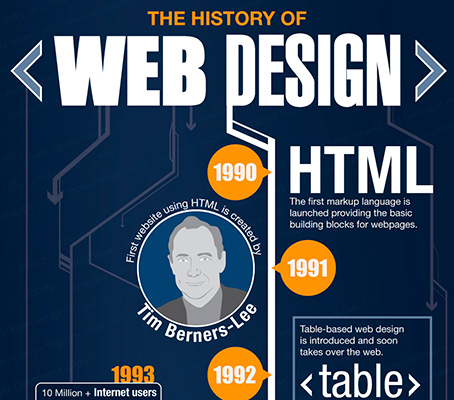The Evolution Of Internet Site Layout: From Past To Existing
The Evolution Of Internet Site Layout: From Past To Existing
Blog Article
Writer-Hartley Lunde
In the past, web sites were straightforward and focused on details. Navigation was direct, and design was for desktop computers. Now, user experience is key. Information overviews styles for simple navigating. Receptive layouts suit various tools. Today, dark setting lowers pressure, and minimalist menus boost navigating. Interactive functions involve individuals, and bold visuals attract attention. AI integration enhances involvement. See just how style has progressed to enhance your on the internet journey.
Early Days of Web Design
In the very early days of web design, simplicity preponderated. Sites were fundamental, with minimal colors, fonts, and designs. The emphasis got on offering details rather than showy visuals. basic managed wordpress accessed the internet via sluggish dial-up connections, so rate and capability were essential.
Navigation menus were straightforward, typically located on top or side of the page. Sites were developed for home computer, as mobile browsing wasn't yet common. Material was king, and designers prioritized very easy readability over intricate layout components.
HTML was the main coding language made use of, and designers needed to function within its restrictions. Computer animations and interactive features were very little compared to today's requirements. Internet sites were static, with little dynamic material or personalized customer experiences.
Increase of User-Focused Style
With the evolution of website design, a shift towards user-focused design concepts has actually come to be increasingly prominent. Today, creating web sites that prioritize individual experience is vital for involving site visitors and achieving company goals. User-focused style involves understanding the needs, preferences, and habits of your target audience to tailor the internet site's layout, web content, and features appropriately.
Developers now carry out thorough research, such as customer studies and usability testing, to collect understandings and feedback directly from users. This data-driven technique assists in creating intuitive navigation, clear calls-to-action, and visually attractive interfaces that reverberate with site visitors. By placing the customer at the center of the layout procedure, websites can supply a more customized and delightful experience.
Receptive layout has actually additionally emerged as an essential aspect of user-focused style, making certain that internet sites are optimized for various devices and display dimensions. This adaptability enhances accessibility and use, accommodating the varied ways customers engage with web sites today. Fundamentally, the increase of user-focused design symbolizes a shift towards developing electronic experiences that focus on the demands and assumptions of the end individual.
Modern Trends in Website Design
Explore the latest fads forming website design today. https://howmuchisseo51728.blogsidea.com/32551036/producing-a-site-from-scratch-an-extensive-hosting-walkthrough is dark mode style, providing a streamlined and contemporary look while reducing eye stress in low-light atmospheres. expert search engine marketing firm is minimal navigating, simplifying menus and boosting individual experience by focusing on essential elements. Integrating micro-interactions, such as animated switches or scrolling effects, can create a more appealing and interactive website. Responsive layout remains vital, making certain seamless customer experiences throughout numerous gadgets. In addition, making use of strong typography and asymmetrical formats can include visual interest and accentuate particular material.
Integrating AI technology, like chatbots for client assistance or personalized suggestions, boosts user interaction and improves processes. Access has additionally come to be a considerable pattern, with designers focusing on inclusive layout techniques to satisfy varied individual requirements. Embracing sustainability by optimizing web site efficiency for rate and effectiveness is one more arising trend in website design. Collaborating with customer comments and information analytics to repeat and improve design continuously is important for staying relevant in the ever-evolving digital landscape. By embracing these modern fads, you can create a visually appealing, straightforward internet site that resonates with your audience.
Verdict
As you review the advancement of web site style from the very early days to currently, you can see exactly how user-focused layout has ended up being the driving force behind modern-day fads.
Embrace the trip of modification and adjustment in website design, always keeping the user experience at the center.
Remain current with the current fads and modern technologies, and never quit developing your approach to produce visually magnificent and straightforward web sites.
Develop, adapt, and create - the future of website design is in your hands.
